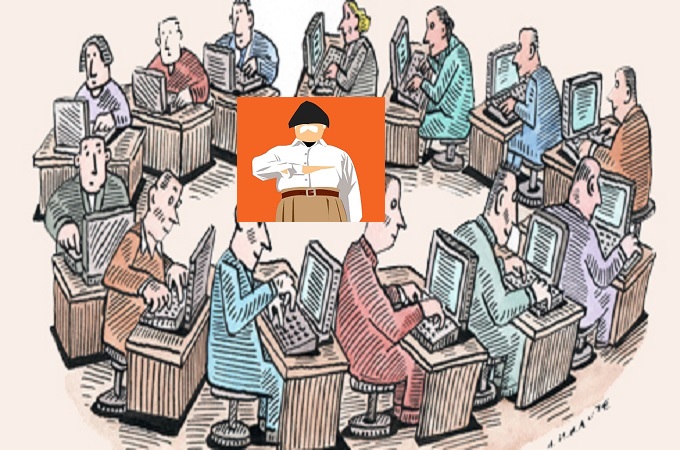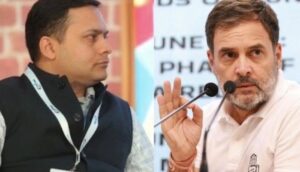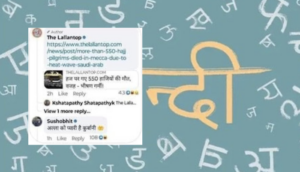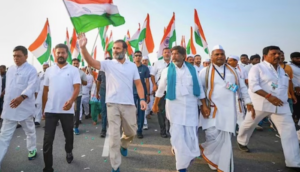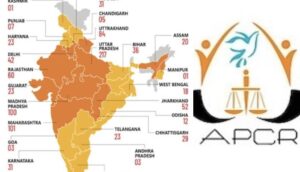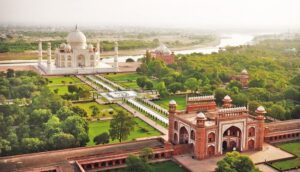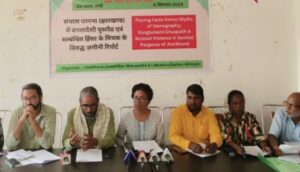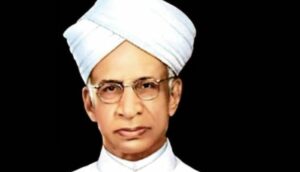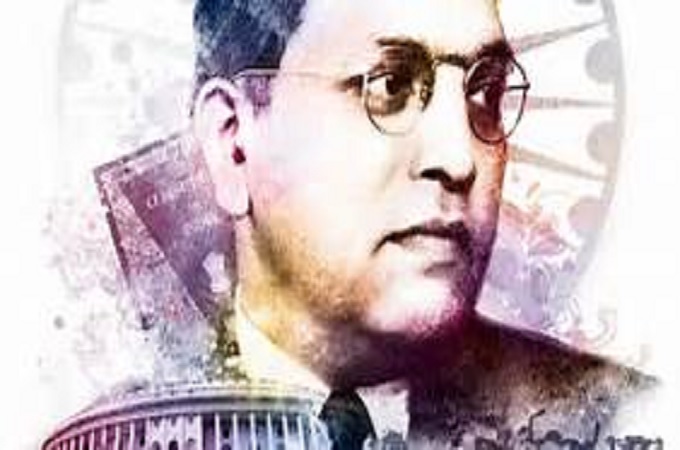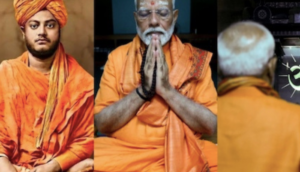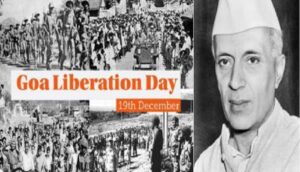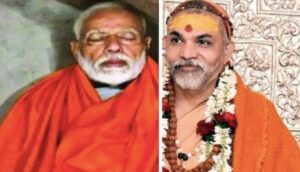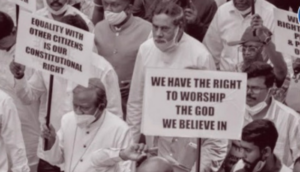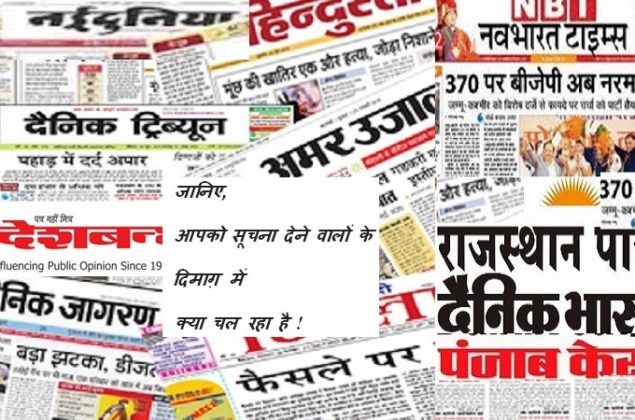
नवभारत टाइम्स
सजा और सेलिब्रिटी
काला हिरण शिकार मामले में बॉलिवुड स्टार सलमान खान को पांच साल कारावास की सजा सुनाए जाने से उनके लाखों प्रशंसकों को दुख पहुंचा है। लेकिन इस फैसले में कई संदेश निहित हैं, जिन पर देश की तमाम सिलेब्रिटीज के साथ-साथ आम नागरिकों को भी गौर करना चाहिए। अदालत ने साफ कर दिया है कि दोषी चाहे कितना भी प्रसिद्ध या रसूख वाला क्यों न हो, कानून के फंदे से बच नहीं सकता। यह निर्णय बताता है कि कुछ कानूनों को हल्के में लेने की हमारी प्रवृत्ति घातक सिद्ध हो सकती है। पर्यावरण और वन्य जीव जैसे मामले को आम तौर पर संजीदगी से नहीं लिया जाता। इन मामलों में किसी तरह की अनियमितता को लेकर न तो लोग जागरूक होते हैं, न ही प्रशासनिक तंत्र मुस्तैद रहता है। काला हिरण मामले में अगर बिश्नोई समाज तत्पर नहीं हुआ होता तो शायद यह इस अंजाम तक नहीं पहुंच पाता। निश्चित रूप से इस केस का सबसे बड़ा संदेश यह है कि सिलेब्रिटी होना एक विशिष्ट जवाबदेही है, जिसका हर हाल में ध्यान रखा जाना जरूरी है। काले हिरणों के शिकार की घटना 1998 में ‘हम साथ-साथ हैं’ फिल्म की शूटिंग के दौरान हुई। आरोप है कि सलमान खान अपने को-स्टार्स सैफ अली खान, तब्बू, सोनाली बेंद्रे और नीलम के साथ जोधपुर के पास कांकाणी गांव गए थे और वहां उन्होंने दो हिरणों का शिकार किया था। लोगों ने इन्हें देख लिया तो ये जिप्सी में बैठकर फरार हो गए। आम तौर पर कामयाब और चर्चित लोग यह मानकर चलते हैं कि लोग-बाग उनकी एक झलक के लिए पागल दिखते हैं, लिहाजा वे कुछ भी कर सकते हैं। समाज और प्रशासन तंत्र उनकी गलती को अपने आप नजरअंदाज कर देगा। ऐसे लोग अपने लिए हर स्तर पर विशेष छूट की अपेक्षा करते हैं, जो अक्सर उन्हें मिल भी जाती है। लेकिन उन्हें समझना चाहिए कि समाज उनका गुलाम नहीं है। लोग उन्हें अपना आदर्श मानते हैं, उनके हर आचरण की नकल करते हैं, इसलिए उनकी यह जवाबदेही बनती है कि वे ऐसा कुछ न करें, जिसे लोग गलत मिसाल की तरह ग्रहण करने लगें। उन्हें नियम-कानून का पालन करना चाहिए, अपने सहयोगियों से मधुर व्यवहार करना चाहिए और सार्वजनिक रूप से ऐसा कोई बयान नहीं देना चाहिए, जिससे समाज में अशांति फैले। आशा की जानी चाहिए कि सलमान प्रकरण से देश की दूसरी सिलेब्रिटीज भी सबक लेंगी। इस प्रकरण में बिश्नोई समुदाय की चर्चा भी जरूर होनी चाहिए, जो विपरीत परिस्थितियों में भी वन्यजीवों से अपने लगाव पर डटा रहा। काले हिरणों को उस समुदाय के लोग अपने बच्चों सा स्नेह देते हैं। इस मामले में अब तक उन्होंने मजबूती से लड़ाई लड़ी है और देश को यह संदेश दिया है कि परिवेश की रक्षा प्रतिबद्धता से होती है, सिर्फ नारों और हवाई बातों से नहीं।
जनसत्ता
सजा और संदेश
काला हिरण शिकार मामले में फिल्म अभिनेता सलमान खान को सुनाई गई सजा से स्वाभाविक ही यह संदेश गया है कि कानून से ऊपर कोई नहीं है। गौरतलब है कि गुरुवार को जोधपुर की एक अदालत ने सलमान खान को पांच साल की सजा सुनाई, और इसके साथ ही वे हिरासत में ले लिये गए। अलबत्ता अदालत ने इस मामले के अन्य चार आरोपी बॉलीवुड सितारों- सैफ अली खान, तब्बू, सोनाली बेंद्रे और नीलम- को बरी कर दिया। भारत में यों भी अदालती कार्यवाही कछुआ चाल से चलती है। यह मामला भी उसकी मिसाल है, जिसमें फैसला करीब दो दशक बाद आया है। मामले की सुनवाई उन्नीस साल से चल रही थी। जोधपुर की अदालत ने सलमान खान को फिल्म ‘हम साथ-साथ हैं’ की शूटिंग के दौरान कांकणी गांव के भगोदा की ढाणी में दो काले हिरणों को मारने का दोषी पाया है। हमारे देश में काफी अरसे से यह आम धारणा रही है कि अगर आरोपी धनी और ताकतवर या पहुंच वाले हों, तो वे प्राय: बच निकलते हैं। इसीलिए सलमान खान के प्रशंसकों को ही नहीं, बहुत-से अन्य लोगों को भी लगता था कि वे शायद बरी हो जाएंगे। पहले ही शिकार के दो अलग-अलग मामलों और ‘हिट ऐंड रन’ यानी सड़क पर गाड़ी से कुचल कर एक व्यक्ति को मार डालने के मामले में उनके बच जाने से भी इस धारणा को बल मिला था। हालांकि हाल में कई काफी रसूख वाले आरोपियों के भी जेल जाने के उदाहरण दिए जा सकते हैं और अब इस सिलसिले में सलमान खान को सुनाई गई सजा का भी हवाला दिया जाएगा।
दरअसल, ऐसी मिसालों से ही न्याय-व्यवस्था पर लोगों का भरोसा मजबूत होता है। यह और पुख्ता हो, इसके लिए जरूरी है कि हमारी न्याय प्रणाली की गति बढ़ाई जाए। सलमान खान को हुई सजा से फिल्मोद्योग को गहरा झटका लगा है। इसमें दो राय नहीं कि सलमान को आज बॉलीवुड के सबसे लोकप्रिय सितारे के रूप में देखा जाता है। पिछले दशक में उन्होंने कई हिट फिल्में दी हैं। उन्हें केंद्र में रख कर कई फिल्में बन रही थीं; उन पर जिन निर्माताओं का पैसा लगा था वे स्वाभाविक ही परेशान होंगे। पर वे यह क्यों मान कर चल रहे थे कि सलमान का कुछ नहीं बिगड़ेगा? पर्यावरण और वन्यजीव रक्षा के कानूनों के उल्लंघन के जाने कितने मामले होंगे जिनमें किसी को सजा नहीं हुई होगी। पर विलुप्तप्राय जीवों की श्रेणी में रखे गए दो जानवरों का शिकार करने के मामले में सिनेमा की इतनी बड़ी हस्ती को सजा हुई है, तो इसका श्रेय राजस्थान के बिश्नोई समाज को जाता है जिन्होंने मामले को तार्किक परिणति तक ले जाने के लिए कोई कसर बाकी नहीं रखी।
इस समुदाय के लिए काले हिरणों की बड़ी मान्यता है। वे मानते हैं कि काले हिरण के रूप में ही उनके धार्मिक गुरु भगवान जंभेश्वर का पुनर्जन्म हुआ, जिन्हें जंबाजी के नाम से भी जाना जाता है। भारत में काले हिरण आमतौर पर गुजरात, महाराष्ट्र, तमिलनाडु और राजस्थान में पाए जाते हैं। सलमान खान को पांच साल की सजा सुनाए जाने के बावजूद बिश्नोई समुदाय संतुष्ट नहीं है; वे इस बात से नाराज हैं कि बाकी आरोपी सितारों को क्यों बरी कर दिया गया; उन्हें भी सजा दिलाई जा सके इसके लिए उन्होंने ऊपरी अदालत में अपील करने की बात कही है। आगे इस मामले की कानूनी लड़ाई में जो भी मोड़ आए, फैसले से इस बात की उम्मीद जरूर जगी है कि वन्यजीव कानून को अब हल्के में नहीं लिया जाएगा।
हिंदुस्तान
देरी के शिकार
काले हिरण का शिकार करने के मामले में फिल्म अभिनेता सलमान खान को हुई पांच साल की सजा जितना हैरान नहीं करती, उससे ज्यादा भारतीय न्याय-व्यवस्था के बारे में सोचने को मजबूर करती है। यह सजा उस 20 साल पुराने मामले में हुई है, जब एक फिल्म की शूटिंग के दौरान सलमान खान अपने सहयोगी कलाकारों सैफ अली खान, नीलम, सोनाली और तब्बू के साथ शिकार पर निकले थे। आरोप है कि इस शिकार के दौरान उन्होंने एक चिंकारा और दो काले हिरणों का शिकार किया। चिंकारा और काले हिरण, दोनों ही दुर्लभ वन्य जीवों की श्रेणी में आते हैं और उनका शिकार करना गैर-कानूनी है।
जाहिर है कि इसे लेकर उनके खिलाफ मुकदमा चलना ही था। लेकिन इसके बाद की जो कहानी है, वह काफी उलझाने वाली है। उनके खिलाफ तीन मामले तो शिकार के बन गए। इसके अलावा एक मामला बना गैर-कानूनी हथियार का। बताया गया कि इस शिकार के लिए जिन बंदूकों का इस्तेमाल किया गया, उनके लाइसेंस की अवधि समाप्त हो चुकी थी। इन चारों मामलों की प्रक्रिया अलग-अलग चली है और कुछ की तो अभी भी चल रही है। बंदूकों वाले मामले में तो बरी हो गए, लेकिन चिंकारा वाले मामले में उन्हें निचली अदालत ने पांच साल की सजा सुनाई, लेकिन उच्च न्यायालय ने उन्हें इस मामले में आरोप मुक्त कर दिया, जिसके खिलाफ राज्य सरकार ने सुप्रीम कोर्ट में अपील की और यह मामला अभी तक खत्म नहीं हुआ है। इसी तरह, एक काले हिरण के मामले में वह बरी हो गए, जबकि दूसरे के शिकार के मामले में अब जाकर जोधपुर की अदालत ने पांच साल की सजा सुनाई है। जाहिर है कि सलमान खान अब ऊपरी अदालत का दरवाजा खटाखटाएंगे और यह मामला चलता रहेगा।
जहिर है कि एक दिन के शिकार का यह मामला बीस साल तक खिंच गया है और अभी भी इसके जल्द खत्म होने के कोई आसार नहीं हैं। न्याय-व्यवस्था की यह गति परेशान करने वाली है। पिछले बीस साल का यह समय एक अभिनेता के रूप में सलमान खान के शिखर पर पहुंचने का दौर भी है। इसी दौर में तमाम संभावनाओं वाला यह सितारा एक सुपर स्टार में बदल गया और उसने एक के बाद एक हिट फिल्मों की कतार बांध दी। बेशक यह सब सलमान की प्रतिभा और उनकी मेहनत का नतीजा है, लेकिन इस बीच किसी को भी न्याय नहीं मिला, न उन दुर्लभ वन्य जीवों को और न खुद सलमान खान को। उस मौके पर उनके साथ निकले सहयोगी कलाकार भी पिछले बीस साल से मौके-बेमौके अदालतों के चक्कर काटने पर मजबूर हैं।
कानून की दुनिया में एक कहावत है कि देर से हुआ न्याय, न्याय नहीं होता। इसलिए इन मामलों में जब भी अंतिम फैसला होगा, शायद वह न्याय का सम्मान हासिल करने का अधिकारी नहीं रह जाएगा। मामले जब लंबे खिंचते हैं, तो अभियुक्तों को मामले को प्रभावित करने के लिए लंबा समय मिल जाता है। इसका फायदा उठाकर कई सुबूतों को मिटा दिया जाता है, गवाहों को खरीद लिया जाता है। अगर हम अपने देश को सचमुच न्याय आधारित समाज बनाना चाहते हैं, तो अदालतों में बरबाद होने वाले समय को प्राथमिकता बनाना होगा। सलमान खान का यह मामला एक और मामला है, जो हमें न्याय प्रक्रिया को तेज और दुरुस्त बनाने की चेतावनी दे रहा है।
दैनिक भास्कर
बाबाओं की बैसाखी पर सवार मप्र की शिवराज सरकार
मध्यप्रदेश के मुख्यमंत्री शिवराज सिंह चौहान ने विधानसभा चुनावों को आसन्न देख पांच बाबाओं को राज्य मंत्री का दर्जा देकर एक किस्म का विवाद पैदा किया है। सरकार का दावा है कि इन बाबाओं ने वृक्षारोपण, नर्मदा सफाई और जल संरक्षण के लिए काम किया है और इसीलिए उन्हें यह सम्मान दिया गया है। कांग्रेस इसे राजनीतिक हथकंडा बता रही है, जिसे चुनाव जीतने के लिए चौहान सरकार ने अपनाया है। सवाल इन स्थानीय आरोप-प्रत्यारोपों से भी आगे का है कि क्या इस देश के धर्मनिरपेक्ष संविधान की भावना धर्मगुरुओं को राजसत्ता सौंपने के पक्ष में है? इस देश के इतिहास की विडंबना है कि संत की तरह रहने वाले और लंगोटीधारी महात्मा गांधी ने भारत को धर्मनिरपेक्ष राष्ट्र बनाने का विचार रखा था और टाई सूट पहनने वाले बाबा साहेब ने धर्मनिरपेक्ष संविधान की रचना करने के बावजूद स्वयं बौद्ध धर्म ग्रहण किया। बाबा साहेब ने कई बार यह महसूस किया था कि महात्मा गांधी के व्यक्तित्व में संत और राजनेता दोनों विद्यमान हैं, इसलिए कई बार राजनीतिक रूप से उनका मुकाबला करने में दिक्कत आती है। लेकिन उन लोगों के धर्म और राजनीति के मानक उच्चस्तरीय थे और उनका बाह्य आडंबर से कम से कम वास्ता था। यहां मध्यप्रदेश के मुख्यमंत्री ने बाबाओं को राज्यमंत्री का दर्जा देकर न सिर्फ राजनीति की मर्यादा को आहत किया है बल्कि धर्म की मर्यादा को बेदाग नहीं छोड़ा है। आमतौर पर मंत्री उसे बनाया जाता है, जो चुनाव जीतकर आया हो। अगर नहीं आया है तो मंत्री बनने के छह माह के बाद उसे चुनाव जीतने की बाध्यता होती है। इस संवैधानिक दायरे से अलग सरकारों ने राज्यमंत्री का दर्जा देकर संविधान को बाइपास करने की परंपरा डाली है। दूसरी तरफ बाबा या साधु होने का मतलब है कि वह व्यक्ति प्रवृत्ति मार्ग से निवृत्ति मार्ग की ओर चला गया है और उसके लिए सांसारिक सुखों का कोई अर्थ नहीं है। आज अगर शिवराज सिंह चौहान ने इन हथकंडों का सहारा लिया है तो उससे साफ जाहिर है कि वे भाजपा सरकार के चौदह वर्षों के काम से जनता को संतुष्ट नहीं कर पाए हैं। किसान, दलित, व्यापारी, मध्यवर्ग और कर्मचारी सभी उनकी व्यवस्था से दुखी और नाराज हैं। यह समय-समय पर जनअसंतोष के माध्यम से व्यक्त भी होता रहा है। ऐसे में बाबाओं का दामन थामकर वे अपनी वैतरणी पार लगाना चाहते हैं।
दैनिक जागरण
शहरों की सूरत
स्मार्ट सिटी योजना को गति देने के लिए एक विशेष समूह बनाने की पहल कुछ सकारात्मक परिणाम देने वाली भी साबित हो, इसे सुनिश्चित करने की आवश्यकता है। ऐसा इसलिए तत्परता के साथ किया जाना चाहिए, क्योंकि केंद्र सरकार की यह महत्वाकांक्षी योजना अपेक्षित गति से आगे नहीं बढ़ पा रही है। तथ्य केवल यही नहीं है कि संसद की एक समिति इस योजना की धीमी गति पर चिंता जता चुकी है, बल्कि यह भी है कि शहरों के बुनियादी ढांचे से जुड़ी परियोजनाएं सुस्ती का शिकार हैं। स्मार्ट सिटी के तौर पर चयनित कई शहर तो ऐसे भी हैं जो केंद्र सरकार से मिले धन को खर्च करने में फिसड्डी साबित रहे हैं। इस स्थिति में स्मार्ट सिटी संबंधी परियोजनाओं के अमल में कुछ तेजी दिखाने वाले 63 शहरों का एक समूह बनाना ही पर्याप्त नहीं है। जरूरी यह भी है कि स्मार्ट सिटी बनने को तैयार सभी शहर तय समय में सही तरह से अपनी परियोजनाएं पूरी करें। बेहतर होगा कि इन परियोजनाओं के कामकाज पर निगरानी रखने का कोई तंत्र विकसित किया जाए और इस क्रम में यह भी देखा जाए कि शहरों का बुनियादी ढांचा हर हाल में नियम-कानूनों के अनुरूप ही विकसित हो। केंद्र सरकार और साथ ही राज्य सरकारों को इसका अहसास होना चाहिए कि मास्टर प्लान में बार-बार मनमाफिक बदलाव करके और नियोजित विकास के तय मानदंडों की अनदेखी करके शहरों की जो शक्ल बुरी तरह बिगाड़ी जा चुकी है उसे भी संवारने की जरूरत है। अगर शहरों के विकास के लिए जिम्मेदार संस्थाएं पहले की तरह बेपरवाही से काम करती रहीं तो अनियोजित विकास की नई तस्वीर नए सिरे से सामने आ सकती है। इसकी आशंका इसलिए है, क्योंकि बीते दो-तीन दशकों में जो नए शहर आधुनिक शहरी विकास के मॉडल के तौर पर विकसित हुए वे अनियंत्रित विकास का नमूना बनकर रह गए हैं।1यह शहरों को सही तरह से विकसित करने में मिली नाकामी का ही परिणाम है कि देश की राजधानी दिल्ली के ढांचे को सुधारने के मामले में भी सुप्रीम कोर्ट को बार-बार दखल देना पड़ता है। हाल में जब उसने यह सवाल किया कि आखिर दिल्ली में रिहायशी इलाकों में व्यावसायिक गतिविधियां कैसे चल रही हैं तो शहरी विकास संबंधी एजेंसियों से लेकर सरकार तक के पास कोई जवाब नहीं था? नि:संदेह इसका कोई मतलब नहीं हो सकता कि रिहायशी इलाकों में कार, साड़ियों के शोरूम, रेस्त्रं और साथ ही अन्य बड़ी व्यावसायिक गतिविधियां चलें, लेकिन ऐसा दिल्ली के साथ अन्य शहरों में भी देखने को मिलता है। हद यह है कि शहरों के पुराने इलाके ऐसी गतिविधियों से त्रस्त होते हैं और फिर भी उनके नए इलाकों में ऐसा ही होता दिखता है। कभी-कभी ऐसा लगता है कि अपने देश में नियोजित शहरी विकास नाम की कोई चीज ही नहीं और यदि है भी तो उसमें हर तरह का हेरफेर संभव है। इस स्थिति के लिए नेता और नौकरशाह तो दोषी हैं ही, किसी न किसी स्तर आम जनता भी जिम्मेदार है। यदि शहरी नागरिक और उनके विभिन्न संगठन नियोजित विकास के प्रति सजगता नहीं दिखाते तो फिर वे बेतरतीब विकास से बच नहीं सकते।
प्रभात खबर
स्कूलों में विज्ञान
देश की स्कूली शिक्षा व्यवस्था की खामियों को दूर करने के लिए संरचनात्मक सुधार की जरूरत लंबे समय से महसूस की जा रही है. केंद्र सरकार द्वारा प्रस्तावित नयी शिक्षा नीति इसी दिशा में एक ठोस पहल है. प्रख्यात वैज्ञानिक के कंस्तूरीरंगन की अध्यक्षता में गठित समिति इस नीति की रूपरेखा बना रही है. जून, 2017 में बनी इस समिति की रिपोर्ट बीते दिसंबर तक अपेक्षित थी, परंतु मसले की व्यापकता के मद्देनजर इसका कार्यकाल बढ़ा दिया गया है. नौ सदस्यीय समिति टीएसआर सुब्रमण्यम पैनल के सुझावों का भी संज्ञान ले रही है. स्कूली शिक्षा की बेहतरी न सिर्फ तमाम छात्रों के भविष्य के लिए जरूरी है, बल्कि देश के सर्वांगीण विकास की मजबूत नींव तैयार करने में इसकी अहम भूमिका है.
आज दुनियाभर में तकनीक का प्रभाव और वैज्ञानिक सोच की महत्ता बढ़ रही है. ऐसे में उम्मीद है कि नयी शिक्षा नीति में विज्ञान की शिक्षा पर समुचित ध्यान दिया जायेगा. कस्तूरीरंगन ने भी जोर दिया है कि मौजूदा मानसिकता से ऊपर उठकर विज्ञान की शिक्षा को बहु-विषयक आयाम देना जरूरी है. वैसे तो विज्ञान हमारे वर्तमान शिक्षा प्रणाली का एक विशेष विषय है, पर उसमें ऐसे बदलाव अपेक्षित हैं, जो छात्रों में अन्वेषणात्मक प्रवृत्ति, विश्लेषणात्मक कौशल और वैज्ञानिक चेतना को समृद्ध करें. यह एक दुर्भाग्यपूर्ण सच्चाई है कि शासन-प्रशासन के उच्च पदों पर आसीन और सामाजिक रूप से सफल कुछ लोग अवैज्ञानिक, अपुष्ट और असत्य तथ्यों को प्रस्तुत कर लोगों को भ्रमित करने का प्रयास करते हैं.
फर्जी खबरों और कट्टरपंथी धार्मिक सोच का साया भी गहरा हो रहा है. स्कूली छात्रों के मन और बुद्धि पर इनका खराब असर हो सकता है. यदि शिक्षा की दिशा सही होगी, तो गलत बातें बेमानी हो जायेंगी. सजग समाज के निर्माण के साथ रोजगार और आर्थिक अवसर पैदा करने में भी विज्ञान की शिक्षा बहुत मददगार हो सकती है. प्राचीन काल से ही विज्ञान की कई शाखाओं में हमारे वैज्ञानिकों, गणितज्ञों, खगोलविदों, तकनीशियनों आदि ने उल्लेखनीय सफलताएं हासिल की हैं. चिकित्सा और अंतरिक्ष विज्ञान की हालिया उपलब्धियां वैश्विक स्तर पर दर्ज की गयी हैं. सूचना तकनीक में भी हम विकसित देशों के साथ कदमताल कर रहे हैं. पर, हमारी प्रतिभा और क्षमता की संभावना के लिहाज से ये उपलब्धियां कम ही हैं. स्कूली शिक्षा में विज्ञान को प्राथमिकता दिये बिना इस संभावना को वास्तविकता के धरातल पर नहीं उतारा जा सकता है. इसके साथ स्कूलों को बेहतर संसाधन, अद्यतन पाठ्यक्रम, शिक्षक प्रशिक्षण, नामांकन की दर बढ़ाने जैसे उपायों की भी जरूरत है. यदि शिक्षा की गुणवत्ता प्रारंभिक स्तर से ही उच्च कोटि की होगी, तो आगे के अध्ययन सहज और उपयोगी हो जायेंगे. ढाई दशक बाद शिक्षा नीति में सुधार की कवायद हो रही है. हालांकि, इसे अमली जामा पहनाने में वक्त लग सकता है, पर यदि अच्छी शिक्षा नीति लागू होती है, तो देर से ही सही, बहुप्रतीक्षित सुधार की प्रक्रिया का प्रारंभ होगा.
The Indian Express
Statue vs Statute
There is a palpable sense of hurt in Prime Minister Narendra Modi’s words when he complains that “everyone rushes to do politics in the name of Babasaheb Ambedkar” while “no other government has honoured, given respect to Babasaheb Ambedkar the way the present government has”. To buttress his argument, the prime minister spoke about the public works that were launched in memory of Ambedkar by the Atal Bihari Vajpayeegovernment and the memorial the present government is to inaugurate next week.
The Dalit unrest that rocked the country over the Supreme Court’s order on the SC/ST Prevention of Atrocities Act earlier this week and the opposition campaign that the Modi dispensation is insensitive to Dalit interests appear to have triggered the prime minister’s fusillade. Modi wants Ambedkar to be remembered as a visionary icon who gave the republic its Constitution and spoke for and created a host of institutions, including for waterways, irrigation and ports, as the PM reminded the country on Thursday.
The Modi government has held several events to memorialise Ambedkar, but could not claim Ambedkar’s legacy because it has failed to recognise the living Ambedkar, who inspires political mobilisations that seek to affirm and assert the identity and rights of Dalits and other oppressed communities.
The Modi government, like the Congress governments of the past, has preferred to confine Ambedkar to a symbolic presence and freeze him in stamps and statues. A memorial, of course, has utility for it can boost a people’s self-respect and inspire them to action — Mayawati’s Ambedkar parks in UP exemplify the power of symbolism. But the political Ambedkar, who lives in the liberal — and in the Indian context, radical — vision that illuminates the Constitution, is compromised by the custodians of the republic.
The quest for an egalitarian society is fundamental to his political vision: The rights and freedoms — to equality, free speech, minority rights — detailed in the Constitution are meant to transform India from a hell-hole of inequalities, social hierarchies and oppression to a republic of free and equal citizens.
Seven decades after Independence and 67 years since turning a republic, this ideal remains unrealised. The restiveness of Dalit communities across the country only reflects the failure of successive governments and the political mainstream in translating the vision in the statute books into everyday experience.
The politicised Dalit identifies the Constitution, along with elections, as a powerful instrument to assert her self and citizenship; any talk of rewriting the statute or diluting its spirit is interpreted as an affront to Babasaheb’s republican vision. An argument that pits the statue against the statute is a non-starter.
The Times of India
Cut Fuel Taxes
Reserve Bank of India’s monetary policy committee (MPC) on Wednesday played it safe by keeping the central bank’s policy rate unchanged at 6%. This was widely expected. RBI’s assessment of the underlying economic conditions and its inflation forecast for the remainder of the year were highlights of the policy statement. India’s economy is showing definite signs of revival from the previous year’s slowdown. This is happening at a time when RBI has lowered its inflation forecast for the year. The combination of a growth revival and a benign inflation outlook presents government with an opportunity that should be taken.
Global economic momentum remains strong even as the risk of a trade war keeps growing. The key difference now is that India seems to have recovered from the disruption induced by demonetisation and transition to GST. Indicators such as vehicle sales and housing loans disbursed by banks point to a recovery in private consumption. At this juncture, government must add to the momentum in domestic demand by putting more money in the hands of consumers. A quick and effective way to do it is by lowering taxes on petroleum products.
A reduction in India’s exorbitant fuel taxes can quickly have a knock-on effect. It not only puts more money in the hands of consumers, it will also boost sentiments and enhance India’s economic competitiveness through lower energy prices. The combined effect of these, in the backdrop of positive global economic environment, will boost economic performance and usher in a feel good factor – which the NDA government desperately needs in an election year. At a time when RBI has lowered its inflation forecast to a range of 4.7-5.1% in the period between April and September, there is an opportunity that needs to be exploited.
Government should keep in mind that growth is the best guarantor of buoyant revenue and therefore should be the first priority. To add to the momentum generated by strengthening domestic demand, it should remove obstacles holding back India’s exports. Exports of merchandise have grown at a disappointing pace, especially when seen in the context of a strong global economic performance. It should be government’s priority to enhance the competitiveness of firms exporting merchandise by reducing compliance requirements and reforming GST procedures which add to capital costs of exporters. That we are heading into an election year strengthens that argument.
The New Indian Express
Poltical War in Lanka Far from Over
Sri Lanka’s Prime Minister Ranil Wickremesinghe defeated a no-confidence motion late on Wednesday by 122 votes to 76, but it widened cracks in the coalition government which will be difficult to plaster over. The no-trust motion was moved by former President Mahinda Rajapaksa, whose Sri Lanka Podujana Peramuna won 225 out of the 340 directly-elected local councils in the island nation in February. He has since been demanding that the government step down and call early elections, currently scheduled for 2020.
Wickremesinghe’s United National Party (UNP) has 81 MPs in the 225-member Parliament. It heads a coalition of 107 MPs which depends heavily on allies like President Maithripala Sirisena’s Sri Lanka Freedom Party (SLFP) to stay in power. Other ruling coalition members include the Sri Lanka Muslim Congress, All Ceylon Makkal Congress and the Tamil Progressive Alliance. But the coalition has been plagued by the animosity between the president and the PM.
The UNP and the SLFP fought the February local elections separately, and 13 SLFP members voted against the PM in the no-trust vote. Sirisena has publicly blamed the PM for mismanaging the economy as the country’s growth plummeted to a 16- year low of 3.1 per cent in 2017, increasing unemployment and voter discontent. After a bond scandal at Lanka’s central bank led to accusations that the PM was protecting a former central bank governor suspected of insider trading, Sirisena stripped the finance portfolio from Wickremesinghe.
For India, the return of Rajapaksa would be a cause for concern, since he is seen as close to China, allowing the country to build the Hambantota port and other infrastructure projects in Sri Lanka during his reign, giving Beijing an economic and strategic stranglehold over the island nation. When Wickremesinghe tried to wriggle out of the port project, China called in its dues, forcing him to lease the port to China for 99 years as a debt for equity swap. For the time being, Wickremesinghe has won the battle, but the war is far from over.
The Telegraph
More Mischief
History, as a famous political theorist had said, repeats itself first as tragedy and then as farce. The adage seems to have a particular resonance in the Indian context. The Indian media had their wings clipped — briefly — during the dark days of the Emergency. Another attempt has now been made — it was aborted with lightning speed — to shackle the fourth estate, supposedly one of the pillars of a vibrant democracy. A circular issued by the information and broadcasting ministry announced stringent punishment for journalists disseminating ‘fake news’. The circular had to be withdrawn after an intervention by a ‘miffed’ prime minister. That the announcement had been made without the knowledge of an omnipresent prime minister — a colossus striding across New India — is a minor miracle. Of course, governments, over the years, have attempted to rein in the media, and the Bharatiya Janata Party-led dispensation is not an exception. Even the Congress, which is now trying to corner the BJP over the issue, should do well to remember that the United Progressive Alliance had been willing to test the waters with a bill that allegedly sought to gag the media. The Congress, just like the BJP on this occasion, developed cold feet and decided not to introduce the bill.
The government may have retreated — for the moment — but political interventions to tame the media, or, for that matter, other institutions integral to the functioning of a democracy, are likely to continue. The BJP, in fact, has special expertise when it comes to diluting the integrity of such institutions. The allegation of regulatory media bodies — the I&B circular had entrusted these agencies with the responsibility of determining what is or is not fake news — being packed with faithfuls is a case in point. Then, there is the other point of fairness. Fake news is not the creation of or is endorsed by the media alone. Political functionaries, especially those who lean to the right ideologically, have been accused of profiting by peddling distorted information. Moreover, the BJP — there are no surprises here — may not be in agreement with the idea of self-correction. For a party wedded to the principle of authoritarian control, it is difficult to imagine that the media as an autonomous sphere reserve the right to correct alleged irregularities.
The Indian media should use this incursion as an opportunity to reflect on a myriad threats. The crisis in credibility is the foremost among them. There is no doubting the fact that modern-day journalism has its areas of concern. Fake news — a layered phenomenon with cultural and economic underpinnings – is turning out to be a stick to beat the media with. What is apparent is that the media’s failings — the penchant for sensationalizing content is an example — are being used by governments the world over as a means to harness the press. If anything, the traditional media, their digital counterpart and politicians are complicit in the genesis of fake news. The battle against the menace is thus a shared responsibility.


